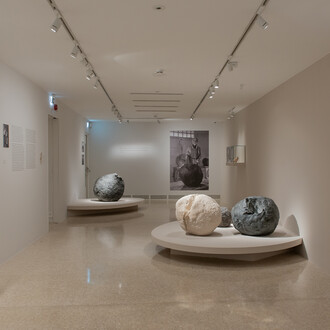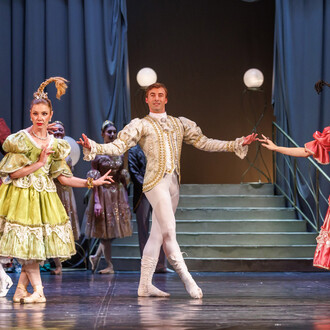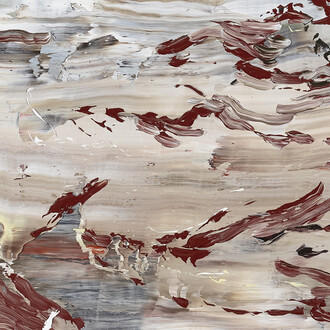Architetture terrone: rethinking the space, geography and territory of a stigmatized culture, traditionally rooted in the land.
It is with this strong and sharp statement in mind that Romina De Novellis (Naples, 1982) — a visual artist, performer, researcher, and anthropologist with Mediterranean roots, yet long based in Paris — intends to formalize her solo exhibition at the Venetian venue of Alberta Pane Gallery.
Through the counter-ritual gestures of her long- lasting performances, Romina De Novellis highlights, unhinges and dismantles binary and patriarchal frameworks ingrained in contemporary thought.
In Architetture terrone, special attention is given to fragile and ephemeral structures, which in the artist's performances become visual and cognitive tools for rethinking the South and the oppression of genders. Adopting an eco-feminist lens, De Novellis critiques societal constraints, challenges dominant gender paradigms, and interrogates the relationship between humanity and nature.
In a retrospective approach, the exhibition highlights some of the most significant performances Romina De Novellis has created over the past fifteen years, primarily through a diverse array of installation-based devices. These ephemeral and temporary displays become visual instruments for rethinking space and the constraints historically tied to it. Though absent of the performer's body that once inhabited them, these structures engage in dialogue with videos and photographs, which serve as essential traces of De Novellis’s performative practice.
The gallery’s long entrance corridor welcomes visitors with a rhythmic sequence of small photographs, documenting all of Romina De Novellis’s performances from 2009 to 2024. The exhibition then unfolds in the main space, where installations, videos, and large-scale photographs are shown.
Among the works on display is Del maiale non si butta via niente (2022), first presented at the Jeu de Paume in Paris. The piece offers a critical reflection on the productivity-driven logic of the agri-food industry, drawing a parallel between female and animal bodies, placed in a condition of simultaneous co-presence and absence.
A similarly eco-feminist sensibility emerges in Si tu m'aimes, protège-moi (2020-2021), where the binomial denounce-care is central, and in Eurydice, a performance conceived in 2021 for the Musée de la Chasse et de la Nature in Paris, in which the myth of Eurydice and the Mediterranean traditions associated with it are reread.
On the other hand, La Gabbia (2012-2016) and La Veglia (2012-2022), presented in installation and photographic form, delve into the moral, social, and cultural claustrophobia that pervades everyday life, while a desire for escape and freedom.
As the exhibition continues into the second part of the space, visitors encounter the installation- performance Voulez-vous danser avec moi ? Merci, je ne préfère pas (2023), inspired by a characteristic element of Southern Italian urban architecture: the traditional Salento bandstand. First presented in the Jardin des Tuileries as part of the Public Program of Art Basel Paris, the work reflects on the solitude embedded in human relationships.
Through this piece, the artist reimagines ritual tradition and proposes a renewed significance for this architectural form. Through the body and performative gesture, Romina De Novellis’s work offers a non-binary reimagining of space — as a form of resistance against ritualistic, suffocating, and pervasive dynamics. Her practice advocates for an inclusive, feminist vision of identity, liberated from imposed constraints.
In Architetture terrone, social and cultural impositions — along with the constructs of tradition, faith, religion, and family, and their repercussions on genders — are critically examined and subverted. Through sculptural structures and performative devices, De Novellis uses her own body to give aesthetic, conceptual, and poetic form to some of the most urgent and pressing issues of our time.
















